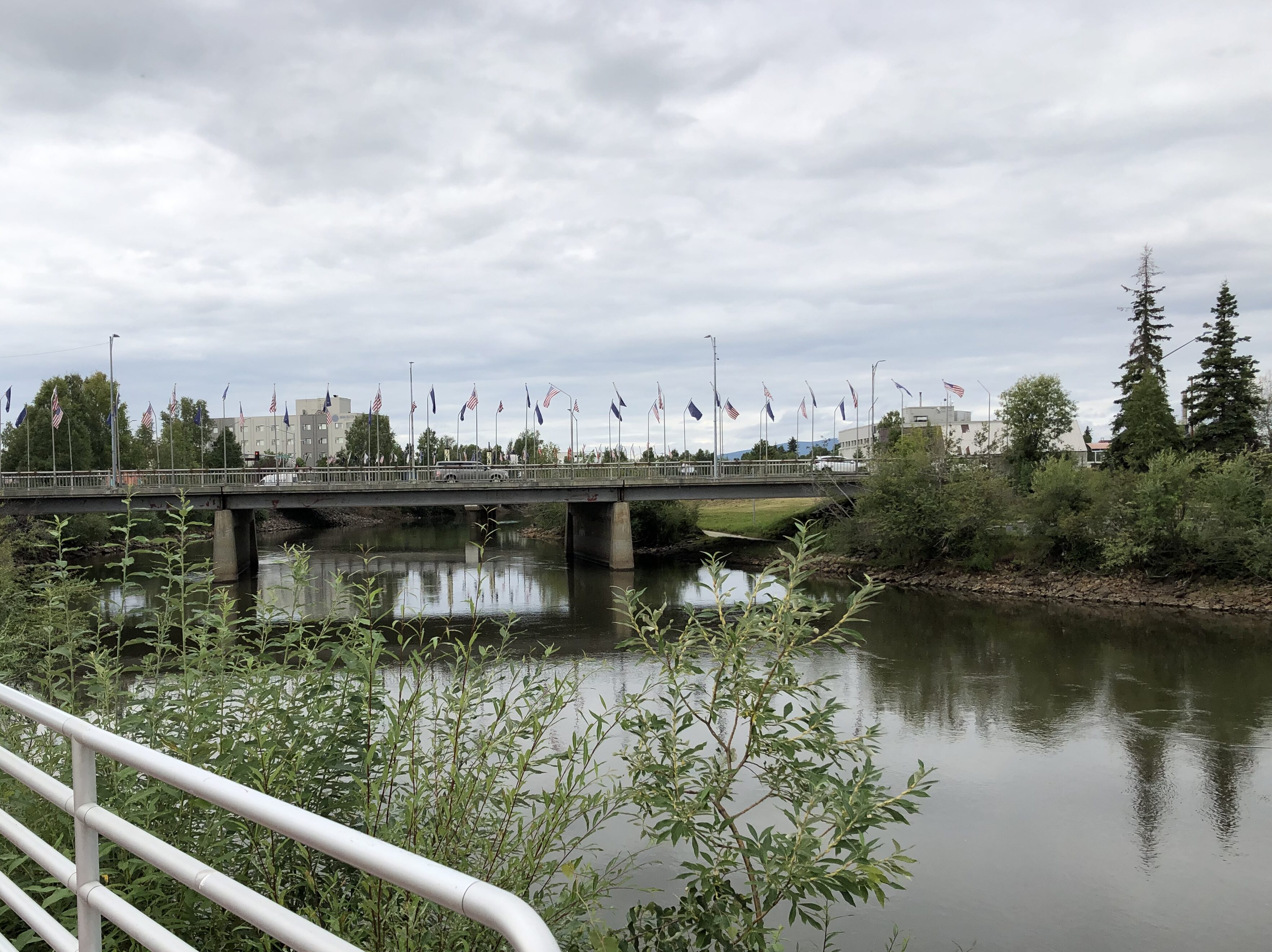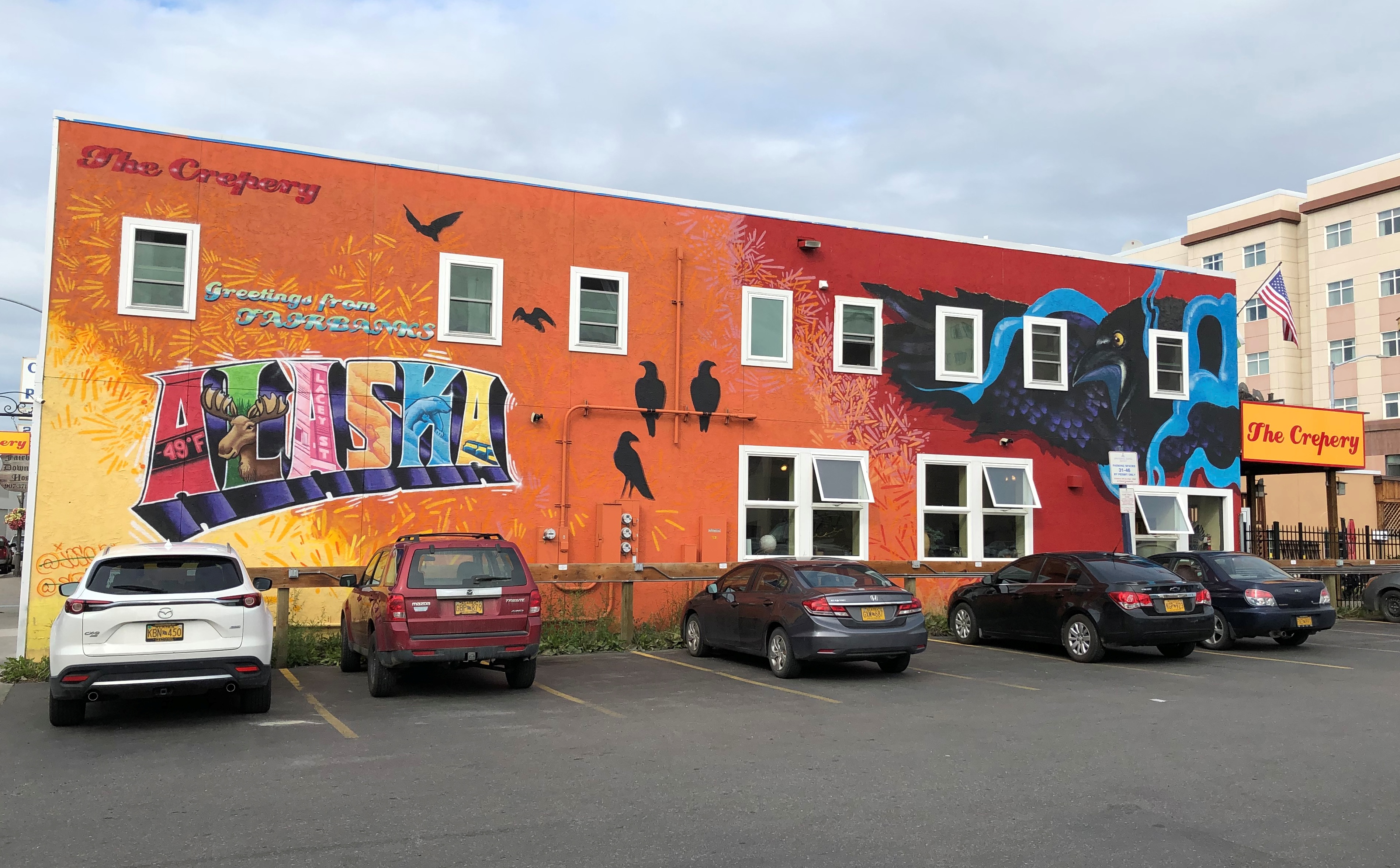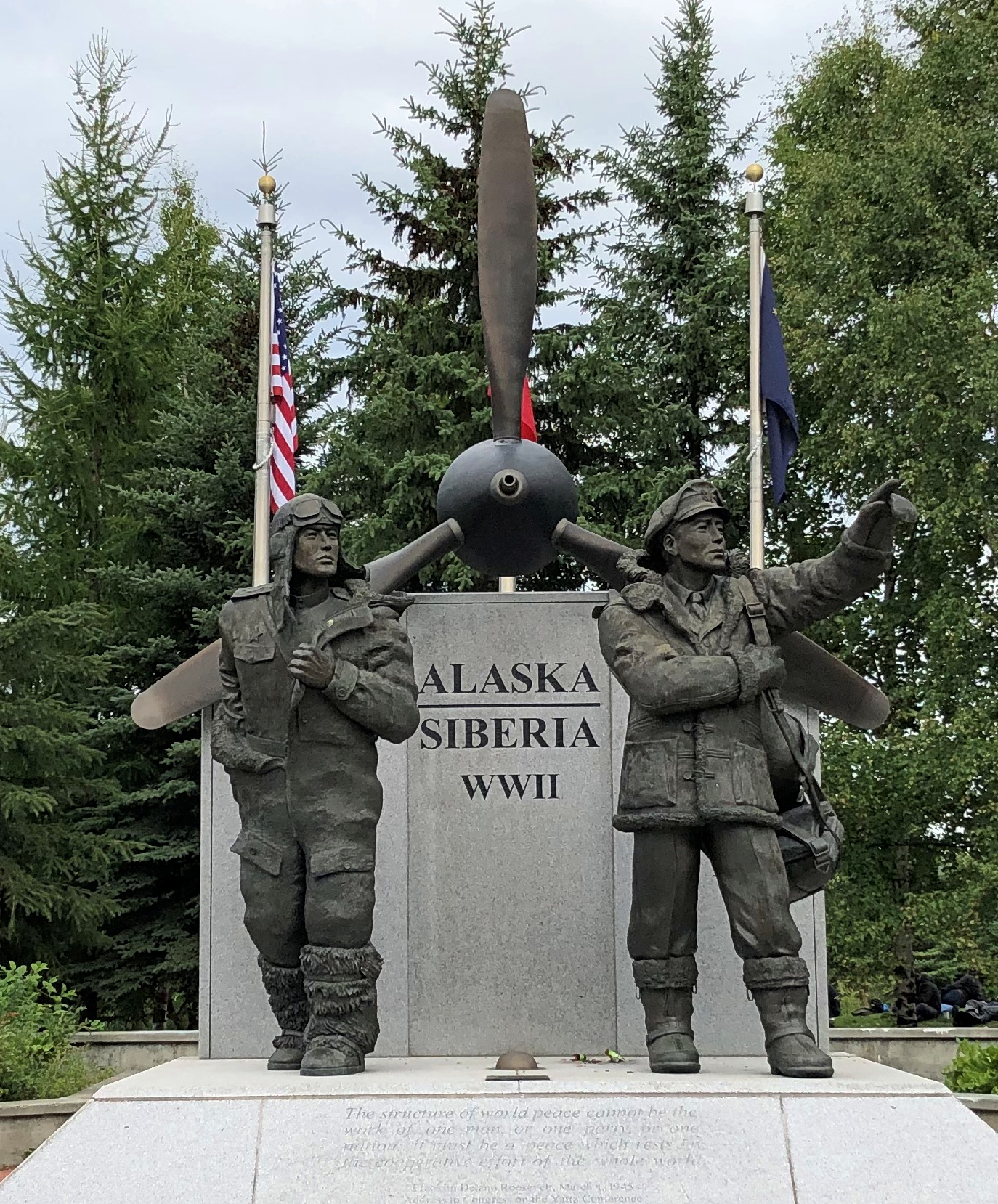When planning my trip to Alaska, I set up two tentpoles: the visits to the Arctic Circle and Denali NP. The marquee attractions, you might say. But I also wanted to see Fairbanks. More than Anchorage, considering Fairbanks’ position as the northernmost city of the nation and its intriguing origin as a gold rush camp.
The city clings to the Chena River, a tributary of the Tanana, which eventually empties into the Yukon River. Downtown Fairbanks is the spot on the Chena where the buildings are slightly larger and slightly closer together than elsewhere in the city, but by no stretch of the imagination is Fairbanks a dense place with tall buildings, even downtown.
A plaque marks the city’s spot of origin, put up for the centennial of the Alaska purchase. It’s the site of where Fairbanks founder E.T. Barnette set up a riverside trading post in 1901, which prospered as gold seekers swarmed to the area. (These days, Barnette is a downtown street.)
Views of the Chena at Fairbanks.


The high water mark for the flood of August 15, 1967. It was a whopper. Flood control infrastructure has been built since.
Smack on the south banks of the Chena is Golden Heart Plaza.
“Completed in 1986, Golden Heart Plaza is located where the center of gold-rush activity occurred,” notes the American Planning Association on its page on Great Places in America. Don’t know about great, but the plaza seemed pretty good.
“The decorative-concrete plaza features a ramp that leads directly down to the river, the literal and figurative heart of Fairbanks. The plaza boasts more than 70 bronze plaques that act as a permanent register of names of Interior Alaska families, organizations, and institutions, along with historical vignettes.
“The plaza’s central feature is a fountain statue, ‘Unknown First Family’ by Malcolm Alexander. Standing 18 feet high with water cascading over it into the surrounding pool, the statue has been dedicated to all the Alaska families of the past, present, and future.”
Cascading in the summer, anyway.

I read some of the many plaques. Some were straightforward history, others honored various organizations or groups of people, and yet others were corporate propaganda.

As I wandered around downtown, I took note of other public art. This is the “Interior Alaska Antler Arch,” made of more than 100 moose and caribou antlers, and a few skulls. A local artist and outdoorsman, Sandy Jamieson, put the arch together.
A memorial to the Alaska-Siberia Lend Lease Airway, designed and created by Alaskan sculptor R.T. Wallen and erected only in 2006.
One hears about the Murmansk Run, but that was only one of the four Lend-Lease routes to provide war materiel to the Soviet Union. Aircraft flew from North America via Alaska to Siberia and then on from there.

“An arresting collection of crossing steel spires, ‘Polaris’ combines the ideas of ice, quartz, and the Aurora Borealis, the world-famous nightly electrical atmospheric phenomenon that Fairbanks, Alaska, is ideally positioned for,” says Atlas Obscura.
“Its longest spire points directly at the North Star. The artwork was designed and constructed by artists Michael Vandermeer and Cheryl Hamilton in Vancouver, Canada, and then transported to Fairbanks.”
A memorial statue to the Alaska Territorial Guard, 1942-47, by Athabascan artist James Grant.

I also got a look at some downtown buildings (or near downtown), though not in any systematic way. Just whatever I thought interesting. For instance, no Denali for this bank.
The mural on side of the Crepery, where I had lunch one day.

An Irish bar, far from Ireland.

More.
I thought it strange that a building this large was boarded up.

I didn’t look it up until I got home. It’s an abandoned hotel and the tallest building in Fairbanks. Looks to be 11 stories. Quite a story.
A couple more buildings, somewhat further from downtown, though still within walking distance of everything else I saw. First, a major riverside facility of Aurora Energy, an electric utility.
Fairbanks has a handsome deco city hall, designed by Tourtellotte & Hummel, who has offices in Boise and Portland, Oregon. Developed in the 1930s, it was a school for decades. Fairbank’s only school until 1951.
I went in. No guard or metal detectors. No one paid the slightest bit of attention to me. That was refreshing.
City Hall is one of Fairbank’s more aesthetic buildings, but that wasn’t the only reason I went in. A pamphlet I picked up on public art in Fairbanks tipped me off to artwork inside that I had to see. A bust by Franklin Simmons.

It’s Vice President Charles Fairbanks.









